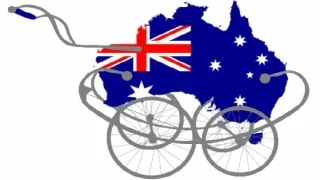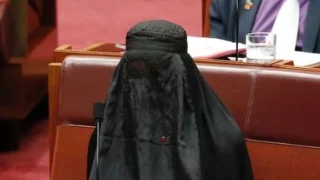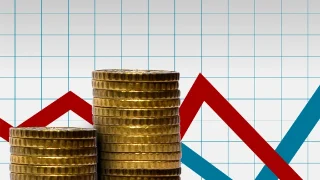
Tom Switzer’s chapter contribution, “Lessons for liberals from the Anglosphere,” in David Steven’s (edited) Dignity & Prosperity: The Future of Liberal Australia (Connor Court publishing, 2023), pp 105-125
Introduction
One of the most important political quotes in recent times came from Tony Abbott. Addressing Liberal party supporters on the night of the Coalition’s surprise election victory in May 2019, the former prime minister remarked: “It’s clear that in what might be described as ‘working seats,’ we [Liberals] are doing so much better. It’s also clear that in at least some of what might be described as ‘wealthy seats,’ we are doing it tough, and the green left is doing better.”
Abbott, who had just lost his erstwhile safe seat of Warringah centred around affluent Mosman and Sydney’s northern beaches, was referring to Australia’s emerging political realignment. At the 2019 election, it was the lower-income working-class voters – or what Scott Morrison had called “quiet Australians” — who helped deliver the Coalition a third straight victory. The conservatives had picked up Labor seats in northern Tasmania, western Sydney and Queensland — precisely the areas where the Coalition, under the progressive Malcolm Turnbull, went backwards in 2016. At the same time, well-heeled Liberal metropolitan electorates bled votes to left-leaning parties and candidates – the most obvious being Abbott’s seat, which he lost after 25 years of service.
Fast forward to May 2022: the flip side of Abbott’s political analysis showed it was the Liberal heartland constituencies (or “wealthy seats,” as he had called them) that helped deliver defeat for the Coalition government, even though the opposition Labor party attracted its lowest primary vote (32.6 per cent) in more than a century. By voting for more progressive or left-wing alternatives, affluent Liberal voters – aided by shrewd tactical voting of parties on the Left — turned traditional blue-ribbon federal seats a different colour: think of not just Warringah, but Wentworth, Mackellar and North Sydney in Sydney, Kooyong and Goldstein in Melbourne and Curtin in Perth (all Teal), Higgins in Melbourne (Labor) and Ryan and Brisbane in Queensland (Greens). At the same time, about three-and-half times as many voters deserted the Coalition to vote for parties to the right (One Nation, United Australia, Liberal Democrats.)
The Anglo-American realignment
The seismic shifts that Abbott identified in 2019 have been hardly confined to Australia: indeed, a political realignment is more evident in the US and the UK; and in a sign of new cultural and economic divides, both Americans and Brits are ending long-time political allegiances. In recent years, Conservatives and Republicans have won over key segments of working-class and mainly non-university educated erstwhile Labour and Democrat voters. At the same time, they have bled traditional voters to more progressive parties.
To be sure, the move of low-income, less-educated, working-class areas to the political right is hardly new. America had the “Reagan Democrats” and Australia had the “Howard battlers” long before Trump and Morrison arrived on the scene. Ronald Reagan won over key segments of the blue-collar vote to the American conservative cause by delivering security and prosperity and reasserting traditional values based on a robust patriotism. In the 1990s and 2000s, John Howard won many traditional Labor voters, most notably in Sydney’s western suburbs. However, with the rapid socio-economic changes of recent decades, the realignment has become more pronounced across the Anglosphere, especially in Britain and the US.
The UK
In December 2019, Boris Johnson’s Conservatives smashed Labour’s so-called red wall of working-class and old coal and factory constituencies across central and northern England, giving the Tories their biggest majority in more than three decades. (In Britain, as in Australia, Labour is red while Conservatives are blue whereas in the US the colours are reversed.) Some of these areas had not voted Tory since the 1920s and ’30s.
It is widely believed that Brexit – the 2016 referendum on whether Britain should leave the European Union – galvanised English working-class voters like no issue in generations. As the Tories, especially under Johnson in 2019, united in favour of Brexit, working classes voted blue in greater numbers. Making matters worse for Labour, Jeremy Corbyn and his left-wing acolytes were too radical for the party’s patriotic blue-collar base.
But there are broader issues that help explain changing attitudes and political allegiances. Immigration controls, greater public investment in stagnating industrial heartlands (or “levelling up” nation building), a strong distaste for identity politics and opposition to left-wing attempts to undermine western history and culture – all this helps explain why so many traditional Labour voters in central and northern England voted Tory in 2019.
However, in wealthy metropolitan areas that voted Remain in the 2016 referendum, the Conservative vote fell in 2019. Young, university-educated, socially liberal, middle-class cosmopolitan Londoners are cut from an entirely different cloth from the pro-Brexit, blue-collar constituencies, who reside in smaller towns and old industrial heartlands.
Hence the British Tory divide between free-marketeers and protectionists, between liberal-conservative elites who are pro-immigration and cultural conservatives bent on attracting those left behind who oppose mass immigration. Strong proponents of the UK inclusion into the EU, including urban educated left-wingers and public sector workers, were more likely to vote for Labour or the Greens and Liberal Democrats.
The upshot is that, at the 2019 election and at least until recently, the Tories — once the home of the British upper class — increasingly draw their support from working-class voters, primarily from England and Wales. They are older and more anxious about social change and are more focused on regional inequality and left-behind workers than urban Labour supporters. Meanwhile, as the British intellectual David Goodhart observes, Labour has generally struggled to reflect the identity anxieties of the average British voter over immigration and national identity.
The US
American politics has been reconfigured along similar lines as Britain. In 2016, Donald Trump won the “rust belt” states in the US upper mid-west that usually vote Democrat in presidential races: Wisconsin, Michigan and Pennsylvania. His appeal was driven primarily by his ability to resonate with significant segments of mainly white blue-collar Americans who believe their nation is in serious decline.
These people are what the prominent Washington-based writer John B. Judis calls Middle American Radicals, alienated working and lower-middle class folks who defy partisan labels: they hold right-wing views on race, crime and poverty as well as left-wing views on big business, income inequality and government pensions. They are angered and alienated by the Democrats’ embrace of identity politics and globalism.
Above all else, Middle American Radicals are nationalists, who are disoriented by the radical socio-economic changes of recent decades. They rail against an establishment that has weakened border protection, preached political correctness, negotiated trade deals that haemorrhage US jobs and plunged the nation into Mesopotamia misadventures.
Which helps explain why Trumpian populism resonated so well among these constituencies in 2016: he presented himself as the living antidote to decline. “Make America Great Again” has been the constant refrain of the Trump crowd – and the rationalisation for its receptivity to The Donald’s various campaigns since he successfully campaigned the White House.
However, by 2020 the GOP’s lurch to the populist, nativist Right meant they had also lost support in relatively affluent suburban electorates, including in “red states” Texas and Georgia. College-educated suburban and mainstream Republicans, especially women, were turned off by Trump’s abrasive style. This was not to deny Trump’s policy accomplishments – booming pre-Covid economy, education choice, Abraham Arab-Israeli peace accords, for instance.
It’s just that stretches of suburbia that had been Republican strongholds intensely disliked Trump’s polarising politics. Larry Hogan, Maryland’s Republican governor, reflected this mindset when he refused to vote for Trump in 2020. (He wrote in Ronald Reagan instead.) A third of the US electorate now identifies as Independent, and many would include former more mainstream Republican voters.
What the realignment means
In the UK and US, the new voters attracted to the Conservatives and Republicans generally do not have university degrees. They support nationalist policies that restrict immigration. And they want to ensure growth and prosperity are shared across the different groups and regions, not just confined to major metropolitan areas.
How enduring the political realignment is remains to be seen. In 2022, it was clear that the 12-year-old British Conservative government, which had three prime ministers in as many months and whose factions had inflicted war on one another, was struggling in the polls as the country had been thrown into the worst cost-of-living crisis since the 1970s. Contrary to widespread expectations, in the midterm elections US Republicans failed to capture the Senate and win the House of Representatives more convincingly: voters in metropolitan, traditionally conservative seats turned away Trump-backed House, Senate and gubernatorial candidates. The spectre of Donald Trump continues to haunt the Republican party.
Still, the upshot is that western politics — far from being characterised by the old left-right ideological divide between capital and labour — is defined increasingly around identity issues, many of which are shaped by values. Indeed, one of the key messages to be taken from politics in the UK and US is that the old Thatcher-Reagan orthodoxies on globalisation, trade, immigration, welfare and much else no longer reflected the anxieties of the emerging centre-right electoral power case. This has come at a cost: both Conservatives and Republicans have embraced fiscal profligacy and (in the US) higher tariffs and (in the UK) higher taxes.
Moreover, for lots of voters, cultural insecurity also matters as much as economic insecurity. “Brexit, Trump, Europe’s populists and perhaps also a realigned conservatism all understand that voters are not GDP-seeking lemmings who think only about transactional costs and benefits,” says Professor Matthew Goodwin from Kent University. “Rather, they care passionately about their wider national community, identity and traditions.” Because they have been left behind by the dramatic socio-economic transformation of their countries, they want to slow the pace of change.
Commentators as varied as French socialist economist Thomas Piketty and American conservative columnist Henry Olsen have been making similar points in recent years. According to Piketty (as paraphrased by Goodwin): “A fundamental problem for many parties on the Left is that they have been taken over by social and cultural elites who have weaker roots in the blue-collar communities that their parties were founded to represent.” The winning formula is to “offer a little bit more economic protection but also a little bit more cultural protection too.” In other words, the “sweet spot” for centre-right parties in the new Anglo-American realignment is centre-left on economics and centre-right on culture.
The scholarship on the new political realignment also raises an intriguing question: Is the new “sweet spot” for the Liberal party also centre-left on economics and centre-right on culture? If so, how do centre-right movements that support market reforms and a less regulated economy hold onto socially conservative working-class voters? How do these parties that embrace a more cultural populist agenda win back key segments of their old metropolitan heartland? All this has a claim to be the most important political challenge for conservatives and genuine liberals for the next decade.
Australian politics is not like the UK/US
Johnson and Trump struck up an economic rapport with many former Labour and Republican working-class constituencies by proposing populist, more interventionist economic policies to tackle a rigged economy and more protection from the strengthening winds of globalisation. In Britain and the US, this mindset is perhaps best explained by the fact that globalisation of recent decades has created losers in old industrial heartlands Wales, Scotland and central and northern England and, in the US, across the “rust-belt” states of the American upper Midwest and parts of the South.
The Thatcher and Reagan free-market revolutions boosted growth and produced vibrant and globally competitive nations, and this was especially felt across rich and middle classes. But not the working classes. Indeed, a strong case can be made that the hollowing out of the industrial base of former Labour strongholds led to the rise of English and Scottish nationalism, which in turn helped fuel support for Brexit and the 2019 Conservative landslide as well as Scotland’s independence movement. In the US, working-class anxieties and resentments about globalisation and relaxed border controls helped fuel the Trump momentum in 2016.
However, the seismic shifts that have pushed both the UK and UK into a state of realignment are not as evident in Australia: our politics during the past three decades or so mean we have been largely immune to the kind of populism and polarisation that have roiled Britain and America.
How so? Well, for one thing, since the Tampa asylum-seeker standoff in 2001, there has been a broad bipartisan consensus in favour of orderly and controlled immigration. (The Rudd government’s 2008-10 decision to disband the Pacific Solution was the aberration.)
All the available polling evidence shows strong public support for tough border protection, which acts as a declaration that the nation state is in charge of its destiny. Migration is conditional on government control over “who comes to this country and the circumstances in which they come,” as Howard put it in 2001. If entry to Australia were perceived to be easy, unlawful and unsafe arrivals would skyrocket. As a result, public support for high levels of immigration would collapse and nativist movements on the political fringe would try to fill the void.
Australia also distinguishes itself from the UK and US on market economics: during the Hawke-Keating and Howard-Costello eras, both sides of politics implemented reforms designed to expand incentives to work and save led to sustainable economic growth and higher living standards for the broad cross-section of ordinary Australians.
That has not stopped the political left and its media mates from promoting the “fairness” mantra to justify more government intervention in the economy. However, rampant inequality is a myth in Australia, as the Productivity Commission pointed out 2018. Indeed, sustained growth delivered higher living standards across all income groups from the mid-1980s until the early 2010s. Casualisation in the workplace, despite union scaremongering, is around the same level since the mid-1990s. Involuntary job loss as a proxy for job insecurity has dropped 22 per cent in the past two decades.
To be sure, Australia and the UK/US have one thing in common: younger voters, egged on by social media and poor school teaching standards, are far more likely to embrace a left-wing world view than older generations. As is the case in both the UK and the US, younger Australians in their 20s and 30s are more likely to lean toward feeling ashamed, rather than proud, of their nation’s history.
In 2018, according to the Centre for Independent Studies/YouGov poll, 58 per cent of Australian millennials — those born between 1980 and 1996 — have a favourable view of socialism, with only 18 per cent having an unfavourable one. They believe government should have more control of the economy.
Sixty-two per cent of millennials believe Australian workers are worse off today than 40 years ago, which is in direct contradiction of all available economic evidence: from the mid-1980s to about 2012, the country experienced the biggest national income boom since the gold rushes; and until the Covid crisis of 2020-21, Australia’s economy enjoyed three decades of economic growth, surpassing The Netherlands for the gold medal for the longest economic expansion in the modern era.
There is understandable angst about people being priced out of the housing market in Sydney and Melbourne. However, far from blaming markets for their plight, young people should complain about government interference, such as the state stamp duty or housing regulations.
Australia’s changing fortunes?
Australia’s long prosperity was driven by productivity-enhancing economic reforms of the 1980s, 1990s and early 2000s. Ever since, various commodities booms have helped boost Canberra’s budget coffers. It explains why we have been immune to the kind of populist disruption that has engulfed the UK and US.
However, the benign economic circumstances have induced a level of complacency that will not hold us in good stead for the next external shock — which could be sparked by another bout of financial contagion, perhaps a collapse of economic confidence coming from the US-China trade and technology war, global growth slowdown and the uncertain trajectory of the western energy transition prolonged by a seemingly endless war between Russia and the western-backed Ukraine. Indeed, dark economic clouds threaten the long prosperity that Australians have become accustomed to for generations.
As a result of expansionary fiscal and monetary policy, the western world is experiencing serious inflation and what has become known internationally as a cost-of-living crisis, which an energy crisis has unquestionably worsened. Taken together, high inflation, higher interest rates, high energy prices could constitute a combustive mixture of low growth and high taxes. As the Australian Financial Review has editorialised: “The harder grind ahead in 2023 could expose the constituencies that Labor is yet to deliver for on the bread-and-butter issues of cost-of-living relief and real wage growth.”
Since the end of the Howard-Costello era, both Labor and Coalition governments have failed to curtail runaway government spending programs, such as National Disability and Insurance Scheme, Gonski schools funding, public hospitals, aged- and child-care. The more entrenched the state becomes, the more expensive it becomes. Notwithstanding the record-high terms of trade, driven by the export sales of iron ore and (of all things) gas and coal, the federal Treasurer Jim Chalmers has shown he has no political appetite to make the kind of spending cuts that are required to put the economy back into surplus before the next economic crisis.
At the same time, governments have failed to legislate the kind of productivity-enhancing reforms from the dollar-shock in the mid-1980s to the global financial crisis of 2008-09 that helped produce Australia’s three-decade bull run. Taken together with higher interest rate payments on debt, increased defence spending and the costs associated with an ageing society, and it is clear, as Costello told my ABC program/podcast “Between the Lines” in November, Australia’s debt and deficit ridden economy is vulnerable to the next economic contagion.
Meanwhile, Labor’s acceleration of the energy transition is fraught with the danger of unintended consequences. Climate enthusiasts admit that achieving net-zero emissions by 2050 presents some difficulties. But they quickly shift to talking up the exciting technological challenge, because, according to Australia’s iron-ore billionaire Andrew Forrest, “there are tens of billions of dollars around the world looking to invest in renewables” and eventually in industries such as hydrogen. Activists also suggest that dissent is an affront to international opinion.
Yet as Australia strives to cut emissions, the developing world doesn’t, particularly India and China, the two most populated countries on the planet. Global energy consumption is expected to increase 50 per cent by 2050 – a rise fuelled mostly by developing countries that want energy not to spite the planet or to offend international opinion, but to raise living standards as best they can.
Renewable energy sources, such as wind and solar power, aren’t up to the job of powering the world’s economies. There isn’t enough wind in much of the world to get the turbines turning. And as the European energy crisis attests, nations that decarbonise too quickly leave themselves being dependent on foreign fossil fuels that are, at least for the time being, more reliable and cheaper than renewables. The reality is that governments need proper contingency plans for their own energy supplies. If Labor relies too heavily on renewables, and fails to use coal and gas to power generators to keep the lights on, the political reckoning could be fierce.
An economic opening for the Liberals
If indeed living standards deteriorate in coming years, the Labor government will not only be politically vulnerable, but Australia will be more susceptible to a more enduring political realignment. In any case, Albanese will surely experience the kinds of “events” against which Harold Macmillan famously warned. The Liberals just need to sell themselves as a sound alternative to capitalise on any Labor failure.
How then should Liberals respond to the likely prospects of a recession or another global economic shock? Should they embrace a more interventionist agenda, as the British Conservatives and US Republicans have done? Or should they stay true to a more market-oriented policy framework that Howard and Costello represented?
It won’t surprise readers to know that, as head of a classical liberal think tank, I thinks the latter. But I do recognise that economic reform is a tough sell, at least in the sense of attracting short-term criticism on social media, which younger people tend to dominate. What matters is not the popularity of a policy, but the popularity of its consequences. Just think how the old Australia – the over-regulated, highly unionised and inflation-prone country of the 1970s – would have coped during the global financial crisis of 2008-09 if Bob Hawke, Paul Keating, Howard and Costello had not paid off our debt, implemented sound market reforms to enable Australia to weather external shocks.
None of this is to deny the genuine sense of public angst about the pace of socio-economic change. As Trump, Brexit and the wave of European populist insurgencies show, there are losers of technological change and globalisation. However, the forces that breed this “creative destruction,” as Joseph Schumpeter called capitalism, can’t be stopped. As Costello has often warned, a nation that shies away from structural reform and fiscal discipline won’t enjoy opportunity and prosperity for all. And as Howard has often argued, reform is like competing in a never-ending foot race: “You know you will never reach the finishing line, but you dare not stop because your competitors will surge past you.” The lesson: sound policy really does matter.
But how to promote an economic reform agenda that improves the living standards of all income groups, not just voters from the wealthy seats but the working seats that are deserting Labor? True, a purist free-market economic agenda – shrinking the state, deregulating industrial relations, slashing company tax and capital gains tax – won’t excite the electorate. It may even dissuade working-class constituencies from voting for centre-right parties.
However, if Liberals find a new language to sell market economics, absorbing and civilising the new populism, an investment boom could drive productivity gains and job creation that will flow to higher wages and lift consumer spending and create higher living standards. People respond to incentives; and high taxes interfere with natural human creativity and drive. Jobs and growth are not created by state paternalistic power, but by private enterprises free to invest and innovate by being taxed and regulated less. Higher wages without commensurate increases in productivity mean more inflation. Taxes on businesses mean fewer jobs. Higher expenditure means slower growth and ultimately lower revenues. Nations can’t tax themselves back to prosperity. You don’t tax a loss; you only tax a profit. Without profit – without capitalism – you cannot raise the revenue to provide for public amenities, such as health, education, welfare and defence.
That means cutting red tape for small business, fixing the state-based payroll taxes and stamp duties on property that stifle labour mobility, reducing workplace regulation, putting public finances on a sustainable footing, breaking the construction union’s monopoly power, ending compulsory retirement savings system, loosening infrastructure bottlenecks, teaching children basic literacy and numeracy skills essential for higher learning, restoring monetary policy to its appropriate role of maintaining price stability and much more. No need for any cosying up to big business, which is increasingly aligned with Labor and the Greens on ethical, social and governance dictums.
A cultural opening for the Liberals
So, Liberals don’t need to jettison liberal, free-market principles in favour of an economic “populist” agenda. As Bill Shorten learnt in 2019, class warfare no longer appeals to the working and lower middle class, which aspire to become rich and understand the perverse incentives of high taxation. Nor should Liberals cross the road to fight a culture war.
However, as the Left seeks to upend norms and attack institutions, the Coalition parties should resonate with what John Howard once called “the decent conservative mainstream of Australia.” Leading American intellectual William F. Buckley, Jr, observed: “A conservative is someone who stands athwart history, yelling stop, a time when no one is inclined to do so.” In these tumultuous times, it still is.
In recent times, the progressive left has been especially noisy and polarising, using social media to push politically correct agendas around perceived racism, sexism and homophobia and denounce those with whom they disagree as morally wicked. And it is winning the battle. Almost daily, we read about another institution — a school or a university or a company — either promoting or pandering to a politically correct agenda in the name of “diversity”. Even though Australia has never been more diverse, the contemporary public discourse is increasingly dominated by the cult of identity politics, which seeks to divide people along racial, gender and sexual lines.
Business should be seen as a force for good, not merely a generator of fat salaries for fat cats. But when corporates wade into “progressive” social issues that have faint if any connection to true shareholders’ interests and the true business of business, then it is not unreasonable for political leaders to call them out and stress that companies, like sporting codes, should be part of a truly civil society. They should operate as places where all citizens can overcome our political differences and instead come together for genuinely public and inclusive purposes – be it playing games or producing wealth-generating goods and services.
Although identity politics is a far bigger issue in American and British politics, its censorious influence is growing in this country: think of the campaign to change Australia Day from January 26, or the refusal of some of our best universities to teach the history of Western civilisation to Australian students, or the idea that pupils require “safe spaces” so that they can be spared the “trauma” of hearing opinions different from their own, or the notion that a woman who accuses a man of sexual harassment is presumed a “victim” before any trial takes place.
In this climate, a genuine liberal movement should rail against the tyranny of the “woke” movement. In doing so, any Liberal leader should take a leaf out of Howard’s book and remind fellow citizens that defending the things that unite us all are more important in a democratic society than our differences, especially our shared freedoms of speech, thought and conscience. There is no point in surrendering the pleasure of open conversation.
A counter-offensive to the zeitgeist would infuriate the Twitterati, which is obsessed with depicting Australia as irretrievably racist, misogynistic, and profoundly flawed. But it is likely to attract the traditional Labor-leaning voters in marginal seats in Queensland, Western Australia and across western Sydney. These people are fed up with Labor’s embrace of identity politics and want to see a far more robust defence of the nation’s cultural heritage. As Trump and Johnson showed in 2016 and 2019, respectively, nobody attracts the masses by being adored by metropolitan sophisticates.
Conclusion
The conventional wisdom is that the Morrison government’s 2022 election loss constitutes an existential crisis for the Liberal Party. The political gravity has shifted leftwards on policy, and the Liberals are increasingly out of touch with the socially liberal sentiments of women and younger voters. The divide between educated metropolitan seats and the less educated outer-suburban electorates is growing, which makes it even more difficult for any Liberal leader to unite these constituencies.
There is no question the Liberal party, at both federal and state levels, faces serious electoral obstacles and new challenges – attracting younger voters, raising funds, stopping the haemorrhage of conservative support to fringe parties on the right spectrum while winning back more small-l Liberals in metropolitan seats.
The reality, though, is that both major Australian political parties face similar challenges with their splintering bases, and the Coalition is in the doldrums for the time being, precisely because they had been in power for the best part of a decade. (Remember in 2013 when Labor lost a landslide election to Tony Abbott’s Coalition, the accepted wisdom was that it was the ALP that faced an “existential crisis.”)
When Australia faces the next crisis, and living standards deteriorate, as is likely (despite the historically high terms of trade) Labor in power will face stiff political headwinds, especially as the Liberals focus on bread-and-butter, first-order issues, such as a living standards and energy crisis.
In a world no longer running on traditional class lines, the key question facing centre-right parties in the Anglosphere is whether they can gain even more traction with more traditional working-class voters on culture issues while they try to win back more socially liberal voters in metropolitan seats on economic issues. As the US and British cases demonstrate, it is a tough balancing act.
Peter Dutton is right that the path to power for the Liberals lies through the suburbs, the regions and small business. But the party of Menzies and Howard should not abandon the metropolitan seats they lost to the Teals in 2022. As the British and US cases show, centre-right parties and movements can’t rely exclusively on new working-class constituencies. They should instead try to place themselves in a position that can resonate with both new voters and long-time supporters without fundamentally betraying their core conservative and liberal principles.










